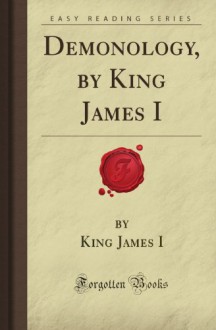The first text presented here, written by James I of England, is a wide-ranging discussion of witchcraft, necromancy, possession, demons, were-wolves, fairies and ghosts, in the form of a Socratic dialogue. The second text is a sensational historical account of Scottish witch persecution and is...
show more
The first text presented here, written by James I of England, is a wide-ranging discussion of witchcraft, necromancy, possession, demons, were-wolves, fairies and ghosts, in the form of a Socratic dialogue. The second text is a sensational historical account of Scottish witch persecution and is one of the sources cited by Margaret Murray. I have taken some care to transcribe these historical documents letter for letter, without any attempt at correction or modernization of spelling. These documents exemplify the convoluted intellectual rationalizations used to justify the barbaric witch hunts. The texts were scanned from an early 20th Century reprint. (Quote from sacred-texts.com)About the AuthorKing James I (1566 - 1625)James VI and I (19 June 1566 - 27 March 1625) was King of Scots as James VI, and King of England and King of Ireland as James I. He ruled in Scotland as James VI from 24 July 1567, when he was only one year old, succeeding his mother Mary, Queen of Scots. Regents governed during his minority, which ended officially in 1578, though he did not gain full control of his government until 1581. On 24 March 1603, as James I, he succeeded the last Tudor monarch of England and Ireland, Elizabeth I, who died without issue. He then ruled England, Scotland and Ireland for 22 years, until his death at the age of 58.James achieved most of his aims in Scotland but faced great difficulties in England, including the Gunpowder Plot in 1605 and repeated conflicts with the English Parliament. According to a tradition originating with historians of the mid-seventeenth-century, James's taste for political absolutism, his financial irresponsibility, and his cultivation of unpopular favourites established the foundation for the English Civil War. Recent historians, how
show less

